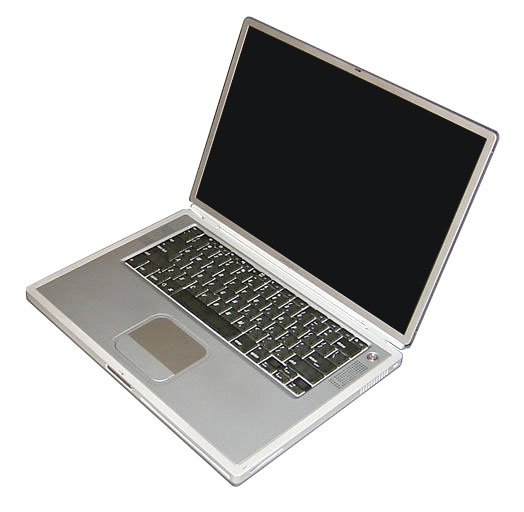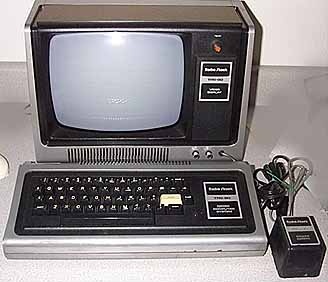I got a number of great comments on the recent post on Design vs. Data. But my favorite by far was on the subjectivity of design and aesthetics:
"The way things look is important, but the way things look is also *subjective*. Terribly so. I have a Macbook Pro and I think it looks like something Tandy would have come up with in 1979. Really, that whole slightly rounded silver design is TRS-80 style."
It's true that a comparison can easily be drawn between, say, my beloved titanium PowerBook:
And the TRS-80:
It's also true that which design you prefer is a very personal thing.
But I think my point was less that Google's apps look crappy, and more that the crappy (in my view) look of their apps (among other things) makes me think that they don't regard design highly, and that if they did hold design in higher regard they could innovate even more than they already have, and make even better products. I assume Google is a company always on the lookout for ways to improve. I'm arguing that a stronger focus on design is one direction that might lead to better products.
Today I was struck by an article over at Ars Technica about Yahoo's new image search preview page. Typically in search engines, clicking on an image in a list of image search results brings up a page that has a frame at the top that contains the image, a link to it and some info about it, and the page that actually contains the image in another frame beneath it. Yahoo has decided to make that upper frame actually useful by granting it some new capabilities, namely, a preview of the next search results and a group of related searches. What's instantly notable is how beautiful the search result frame looks:
Clearly, Yahoo is paying attention to design, and I would argue that it's this attention that has yielded not just better looks (again, to my eye), but greater functionality. The upper frame is visually distinct from the referring page through the use of color. The use of imagery, layout and color and font choices clearly delineate both what the upper frame is and what it does. Contrast this with Google's search result page:
It seems clear to me that Google has not given a great deal of thought to the design of their frame, especially when seen next to Yahoo's version. Google's result frame is both less appealing and less distinctive. It is not readily apparent why the frame exists or what function it provides. Nor does it provide much function at all. I maintain that even if Google were to implement the sort of functionality that Yahoo has incorporated into their search result frame, were they to continue to ignore design to the extent that they have their result frame would be significantly less usable than Yahoo's. I also can't help wondering if Google's lack of design sense may even prevent them from coming up with ideas like the ones present in Yahoo's version of the search result frame, though on this I can only speculate.
So, not to beat a dead horse here, but I did want to reiterate what I was trying to say in Design vs. Data, and point to a rather striking example of it. I think Yahoo's search result frame is just swell, and I would guess that it's at least partially the result of a design sensibility.




